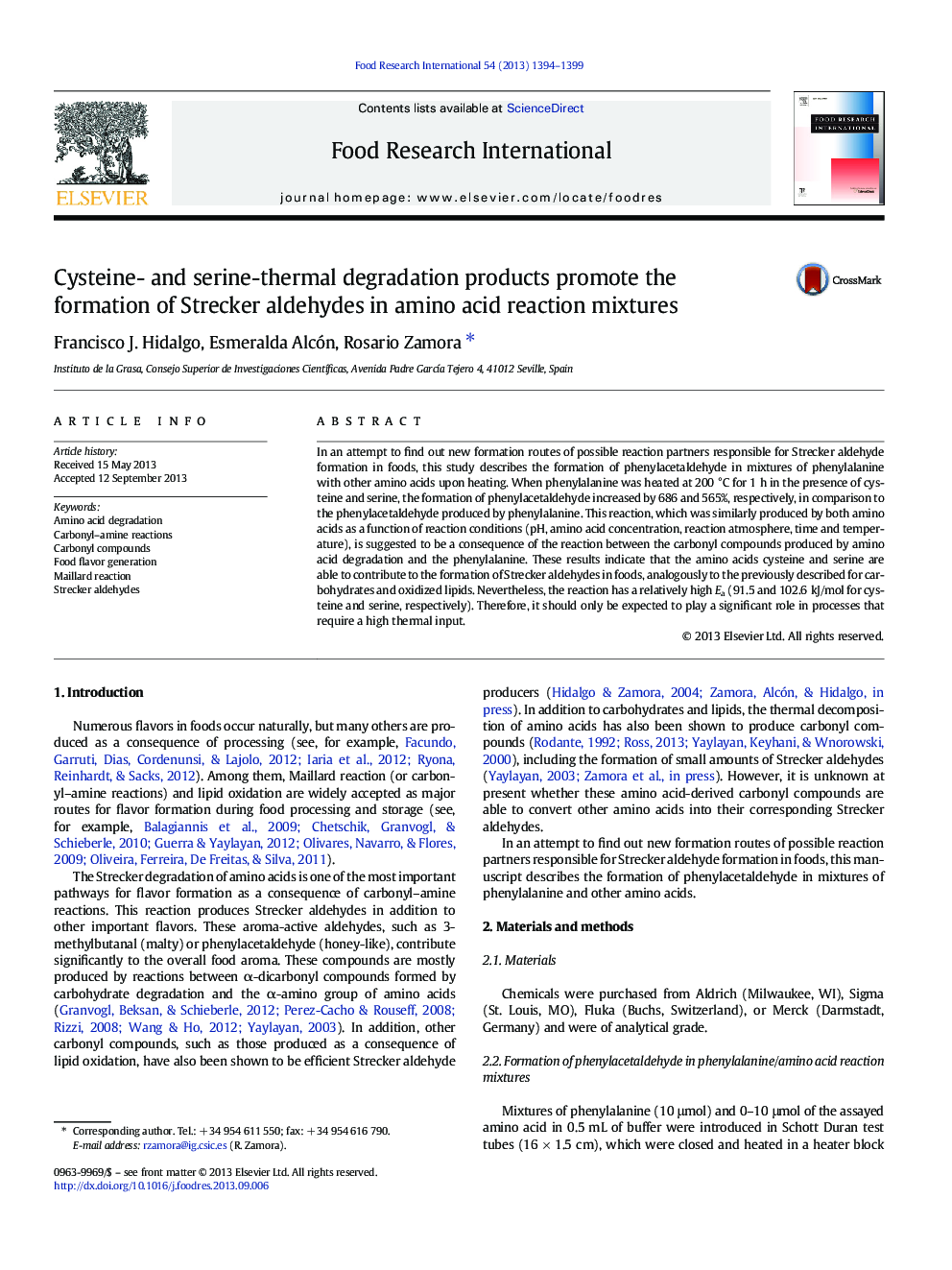| Article ID | Journal | Published Year | Pages | File Type |
|---|---|---|---|---|
| 6397309 | Food Research International | 2013 | 6 Pages |
â¢Cysteine and serine promote the conversion of phenylalanine into phenylacetaldehyde.â¢The Ea of the reaction is 91.5 kJ/mol for cysteine and 102.6 kJ/mol for serine.â¢The reaction is initiated by the thermal degradation products of cysteine and serine.â¢This thermal degradation produces carbonyl compounds.â¢Phenylacetaldehyde is proposed to be produced as a result of carbonyl-amine reactions.
In an attempt to find out new formation routes of possible reaction partners responsible for Strecker aldehyde formation in foods, this study describes the formation of phenylacetaldehyde in mixtures of phenylalanine with other amino acids upon heating. When phenylalanine was heated at 200 °C for 1 h in the presence of cysteine and serine, the formation of phenylacetaldehyde increased by 686 and 565%, respectively, in comparison to the phenylacetaldehyde produced by phenylalanine. This reaction, which was similarly produced by both amino acids as a function of reaction conditions (pH, amino acid concentration, reaction atmosphere, time and temperature), is suggested to be a consequence of the reaction between the carbonyl compounds produced by amino acid degradation and the phenylalanine. These results indicate that the amino acids cysteine and serine are able to contribute to the formation of Strecker aldehydes in foods, analogously to the previously described for carbohydrates and oxidized lipids. Nevertheless, the reaction has a relatively high Ea (91.5 and 102.6 kJ/mol for cysteine and serine, respectively). Therefore, it should only be expected to play a significant role in processes that require a high thermal input.
